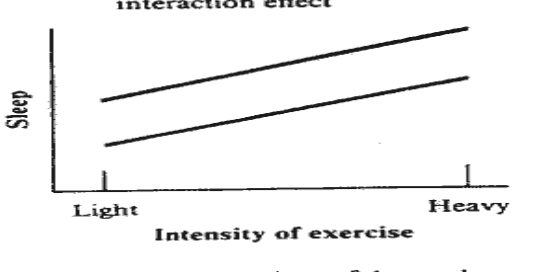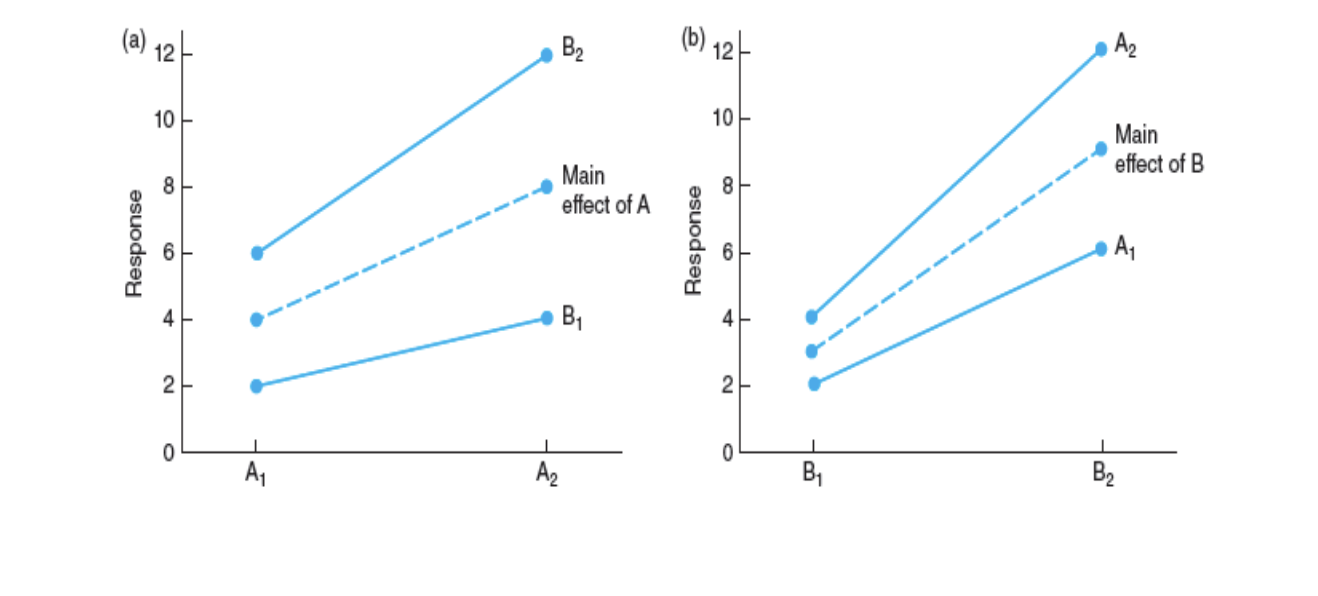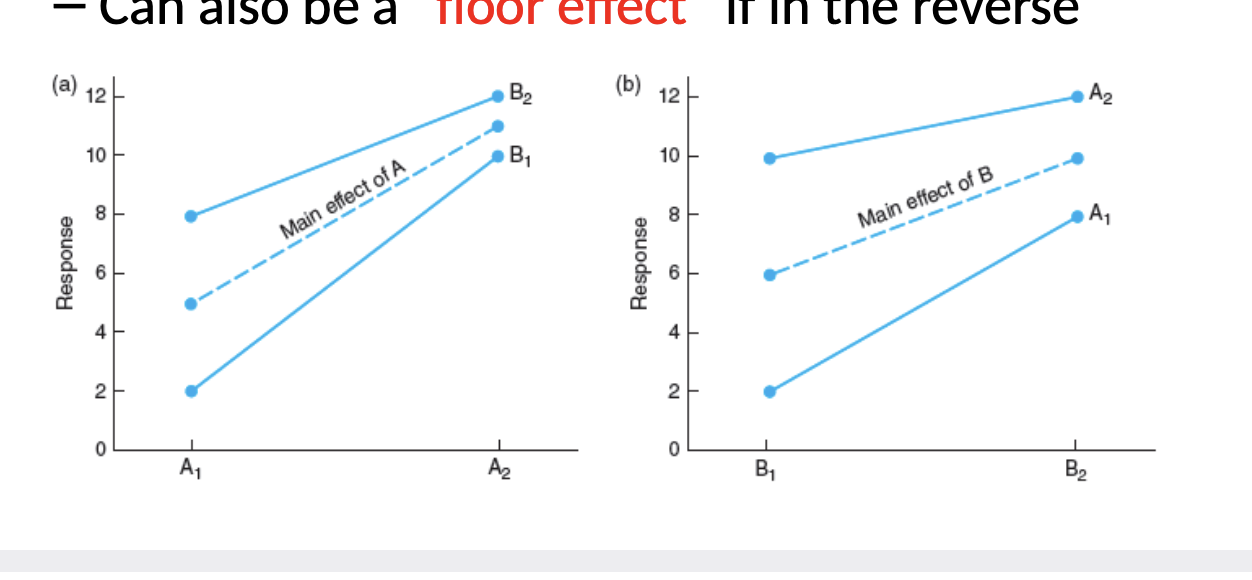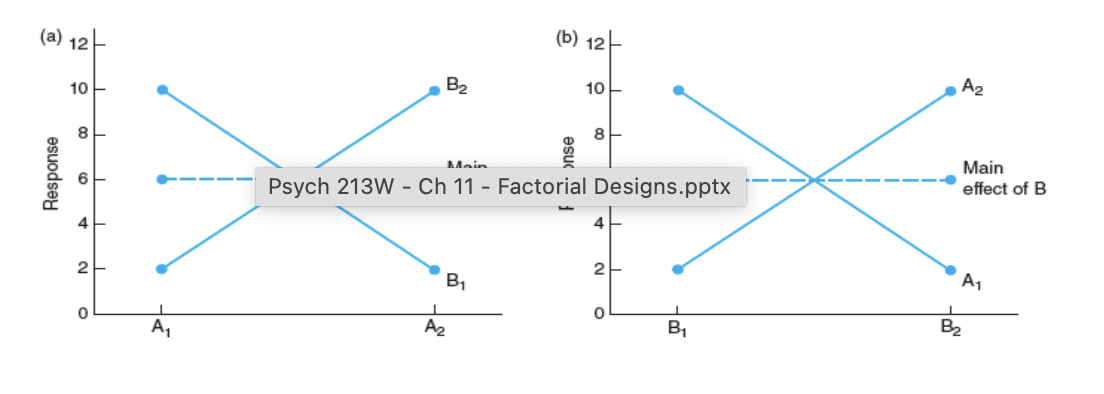Chapter 11: Factorial Designs
1/24
Earn XP
Description and Tags
Flashcards for Chapter 11 on Factorial Designs.
Name | Mastery | Learn | Test | Matching | Spaced |
|---|
No study sessions yet.
25 Terms
Advantages of Factorial Designs over single-factor designs
Study multiple IVs simultaneously, detect interactions, combine one-factor ANOVAs, efficient data use.
Main Effect
Effect of one IV, averaged over all levels of the other variables.
Interaction Effect
Effect of one IV depends on the level of another IV.
Combinations of Effects
Possible to have any combination of interaction and
main effects (all effects are independent of one
another)
• In a 2 x 2 experiment, eight outcomes are possible


Significant interaction effects


Significant time of day effects no other interaction effects


Significant intensity of exercise and time of day effects no interaction effects
Graphing Combinations of Effects
Show if lines are parallel (no interaction) or cross/diverge (interaction).
Types of Interaction Effects
Synergistic, antagonistic, ceiling/floor effects.
Synergistic Interaction

Type of interaction in which two IVs tend to
increase each other’s effects

ceiling/floor effects.

Type of interaction in which one IV has a smaller effect when paired with higher levels
of a second variable
Can also be a “floor effect” if in the reverse

Antagonistic Interaction

Type of interaction when two IVs tend to
reverse each other’s effects

Types of Factorial Designs
Within-subjects, between-subjects, mixed factorial designs.
Within-subjects: definiton
each subject experiences each condition.
Between-subjects: definition
separate groups get each condition, requiring
more subjects to get responses to each condition.
Mixed-factorial:definition
At least one between-subjects variable and at
least one within-subjects variable
Within-Subjects Application
Controls individual differences, fewer subjects.
Between-Subjects Application
Avoids order effects, needs more subjects.
Mixed Designs Application
Combine both, control for some individual differences.
Factorial Notation
Number of factors, levels per factor, total conditions.
Calculate Conditions
Within: total conditions = measurements; Between: total conditions = groups; Mixed: depends on levels.
Subjects and Power
Within: fewest; mixed: moderate; between: most.
Within-subjects factorial design (e.g., 3×2)
6 conditions 6 measurements) Only one sample (group) is needed
Between-subjects factorial design(e.g., 4×3):
12 conditions one measurement 12 separate groups/samples
mixed-factorial designs (e.g. A x B : 4 x 2)signs (e.g. A x B : 4 x 2
(8 conditions. (4 measurements) 2 samples)